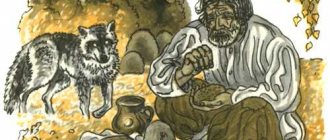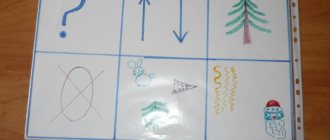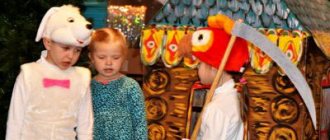Analysis of modern classes in preschool educational institutions according to the Federal State Educational Standard
Analysis of modern classes in preschool educational institutions according to the Federal State Educational Standard
1. General information
1. Topic of the lesson.
2. Date and place of its holding. Who conducts it?
3. Group.
4. Purpose of the lesson:
- what problems this lesson is designed to solve and what personality traits to develop in students; how the specificity and realism of the goal is realized (from the point of view of sufficient time to complete it, compliance with the children’s preparedness for solving it in previous lessons, the capabilities and abilities of the children); how the integration of educational areas is implemented in accordance with the age capabilities and characteristics of students in the classroom.
5. Psychological justification for the choice of the form and content of the activity:
- compliance of the lesson with general educational and correctional-developmental goals and objectives, the level of development of students, and their age characteristics; implementation of a comprehensive thematic principle (the topic of a specific lesson is chosen in the context of the general topic being studied); During the lesson, the joint activity of an adult and children is realized, the main component is interaction.
2. Observing the progress of the lesson
How convincingly, clearly, emotionally were the goals and objectives of the upcoming activity revealed to the students?
How meaningful, interesting and organized was the work?
What knowledge did the students acquire during the lesson:
what social attitudes were formed among the students, what socially useful activities their occupation encouraged them to engage in;
what vital values were formed.
Controllability of the lesson:
- how the opportunity to evaluate intermediate and final results is realized; what conclusions did the students make during the course and at the end of the work; what results have been achieved?
How did the lesson affect the formation of public opinion of the group and individual students on their relationships:
- what could be the consequence of this activity for the development of the team, for the formation of its social orientation;
What is its impact on individual pupils:
- emotional and aesthetic responsiveness to beauty in art; work ethics, artistic activity; aesthetics of behavior.
Methods of work, the nature of relationships, their compliance with educational tasks, age and individual characteristics, the level of development of relationships in the group team.
4. General assessment of the educational event
- To what extent were educational goals and objectives achieved? Reasons for successes, failures, mistakes? General assessment of the educational value of the work performed. Psychological and pedagogical conclusions and suggestions to teachers and students: the effectiveness of the lesson in relation to each child; analysis of children’s activities (by the teacher) and children’s self-analysis of their work; reflexive moment (the teacher encourages the child to express his attitude to the situation, to his activity).
5. Analysis of the teacher’s activities
Which character traits of the teacher contributed to effective work with students, and which, on the contrary, hindered:
- the teacher encourages children to show initiative and independence, encourages the manifestation of subjectivity; the teacher stimulates and encourages children's individual achievements;
What pedagogical abilities were demonstrated when carrying out effective work with students?
- the teacher takes into account the characteristics of each child (pace of activity, emotional state, level of development of mental processes, temperament); the teacher “sees” each child: helps, stimulates, encourages;
Main portals (built by editors)
Psychological mirror
One of the activities of a psychologist in a preschool educational institution is visiting and analyzing teachers’ classes in order to assess the psychological state of children, the absence of overwork, assessing the optimality of selected teaching tools, etc. There are various criteria, but you can use a ready-made scheme for analysis.
A scheme for analyzing a teacher’s occupation as a psychologist was proposed by L. T. Okhitina:
- The presence of comprehensive developmental, training, educational and correctional goals of the lesson.
- To what extent does the content and structure of the lesson meet the principles:
- formation of a motivational basis for an activity (the ability to engage children, the ratio of methods of motivation and coercion to activity);
- individual and differentiated approach;
- the dynamism of children's perception (switching from different types of perceptual activity to others: from auditory to visual, kinesthetic, etc.);
- development of higher mental functions;
- using different types of teaching assistance (imitation, model, verbal instructions, schematic plan, use of symbols);
- using gaming activities as the “outline” of the lesson.
- To what extent is the load distributed?
- on children's memory and their thinking,
- to alternate emotionally rich and interesting, but difficult material; interesting but simple material; uninteresting and simple material; uninteresting and complex material;
- to use reproductive and creative activities?
- What techniques are used to prevent children from becoming tired?
- Which parts of problem-heuristic learning are carried out by the teacher, and which by the children:
- who poses the problem;
- who formulates it;
- who decides?
- The teacher’s ability to combine collective, subgroup, paired and individual forms of work.
- How do adults and peers compare the control, analysis and evaluation of children’s activities? What is the object of assessment by the teacher (knowledge, abilities and skills of children, their behavior, mutual assistance, etc.).
- Features of teacher self-organization:
- preparedness for the lesson (the degree of mastery of the content and psychological purpose of the lesson), internal readiness for the lesson (activity, determination, optimism, resourcefulness);
- pedagogical tact and flexibility of the teacher. work well-being at the beginning of the lesson and during its implementation;
9. Psychological climate in the group:
- How does the teacher support the atmosphere of communication between children;
- type of relationship and communication style.
Analyzing classes in the presence of the entire teaching staff, the educational psychologist performs the functions of psychological education throughout the entire school year.
Other interesting materials:
-Interesting tests for the team;
-Materials for consultations, seminars with teachers.
Views 590, Today 1
reference Information
Documents • Laws • Notices • Document approvals • Contracts • Requests for proposals • Technical specifications • Development plans • Document management • Analytics • Events • Competitions • Results • City administrations • Orders • Contracts • Work execution • Protocols for consideration of applications • Auctions • Projects • Protocols • Budgetary organizations Municipalities • Districts • Education • Programs Reports
: • by references • Documentary base • Securities
Regulations
: • Financial documents
Resolutions
: • Categories by topic • Finance • cities of the Russian Federation • regions • by exact dates Regulations
Terms
: • Scientific terminology • Financial • Economic
Time
: • Dates • 2015 • 2016 Documents in the financial sector • in the investment sector • Financial documents - programs
Education and science
Science
: Tests • Scientific and technological progress • Pedagogy • Work programs • Faculties • Methodological recommendations • School • Vocational education • Student motivation
Subjects
: Biology • Geography • Geology • History • Literature • Literary genres • Literary characters • Mathematics • Medicine • Music • Law • Housing Law • Land Law • Criminal Law • Codes • Psychology (Logic) • Russian Language • Sociology • Physics • Philology • Philosophy • Chemistry • Jurisprudence
Business and finance
Business
: • Banks • Wealth and prosperity • Corruption • (Crime) • Marketing • Management • Investments • Securities: • Management • Open Joint Stock Companies • Projects • Documents • Securities - control • Securities - valuations • Bonds • Debts • Currency • Real estate • (Rent) • Professions • Work • Trade • Services • Finance • Insurance • Budget • Financial services • Loans • Companies • State enterprises • Economics • Macroeconomics • Microeconomics • Taxes • Audit Industry
:
• Metallurgy • Oil • Agriculture • Energy
Construction
• Architecture • Interior • Floors and ceilings • Construction process • Building materials • Thermal insulation • Exterior • Organization and production management
Photo blogs
Art
• Children's creativity • Paintings • Art • Congratulations • Film review • Musical world • Russian rock
World
• People of the world • The world around us • My homeland is the USSR • Nature Channel • Stones and minerals • Cooking, food • Construction and architecture • Under construction • Transport • Weapons • Military transport
beauty
• Fashion Pandia.ru • Girls and Girls
School
• Tests for the Unified State Exam • Solver books • Unified State Examination • 10th and 11th grades • Various textbooks • 4th grade • Russian language grades 5-9 • 5th grade • 6th grade • 7th grade • 8th grade
Wisdom
• Cliparts • Quotes
Author Directory (private accounts)
AutoAuto service • Auto parts • Products for auto • Auto repair centers • Auto accessories • auto parts for foreign cars • Body repair • Auto repair and maintenance • Car chassis repair • Auto chemicals • oils • technical centers • Gasoline engine repair • auto electrical repair • Automatic transmission repair • Tire fitting BusinessAutomation of business processes • Online stores • Construction • Telephone communications • Wholesale companies LeisureLeisure • Entertainment • Creativity • Catering • Restaurants • Bars • Cafes • Coffee shops • Night clubs • Literature TechnologiesAutomation of production processes • Internet • Internet providers • Communications • Information technologies • IT companies • WEB studios • Website promotion • Software sales • Switching equipment • IP telephony | InfrastructureCity • Authority • District administrations • Courts • Utilities • Teen clubs • Public organizations • City information sites The sciencePedagogy • Education • Schools • Training • Teachers GoodsTrading companies • Trade and service companies • Mobile phones • Accessories for mobile phones • Navigation equipment |
Analysis of open classes in the younger group
Conducting and analyzing an open lesson is one of the most effective ways to increase the competence of a teacher. The most valuable thing in this form of methodological work is a clear example of practical work. But no less important is the second part of the event, where all teachers become participants in analyzing what they saw and analyzing it.
I have extensive experience working as a senior teacher, but I believe that it is not always possible to effectively and efficiently analyze the lesson watched.
Sometimes educators behave with restraint and do not want to make critical remarks about a colleague. Maybe they spare his feelings and don’t want to ruin the relationship. In any case, the role of the senior educator is in creating a communication situation where educators openly express their opinions, evaluate the work methods they see, and give arguments in favor of the effectiveness of this work (or lack of results). I would like to give an example of an analysis of a lesson in a younger group (conducted by N.G. Sk-ova on April 27, 2015. “Reading and retelling a fairy tale based on visual symbols (mnemonics)” (see appendix) The purpose of the lesson is to teach retelling to children 3.5 years old Objectives : introduce the text, teach to establish the sequence of events, develop memory, promote understanding of the events of the fairy tale. 1. The teacher made an explanation: she chose this activity for demonstration because she considers the technique of mnemonics (the events of the fairy tale are depicted by the teacher in the form of simple pentagrams) very effective "Practical application of this technique for 2 months gave a visible result. Children began to answer questions on the text more actively, their attention remained throughout the entire lesson, retellings became more accurate, often close to the text. 2. They assessed the effectiveness of the lesson: very effective. Arguments : high speech density, each child spoke at least 2 times. If in the 1st part of the lesson (in the organizational moment) and in the second part (in answering the teacher’s questions) the children’s answers were phrasal, then in 3 parts (drawing a table-tip) and in part 4 (retelling) they consisted of complex sentences.
The maximum number of sentences is 6, the minimum is 2. The children’s interest remained until the end of the lesson. 3. The techniques used were highlighted. Motivation for children's activities. The technique was used in every part of the lesson. First a dog (toy) appeared and the children explained that it was a pet and why. Then they were intrigued by the question about the dog who was looking for a friend, and agreed to listen to the story. Before the physical lesson, the teacher suggested playing the familiar game of sorceress and turned everyone into little puppies. After warming up, I didn’t forget to turn them back into children and checked that all the children had returned. This gathered attention and brought me back to business. The teacher reminded the children that they could be helped by a sign, “our helper, which we learned to create ourselves.” We got down to business together and began to make explanations (retelling the text according to successive episodes). A total of 8 participants, statements of 1-3 sentences. If necessary, help from the teacher: hint, clarification, approval. I asked who wanted to tell a fairy tale. The children reacted actively; the teacher invited the boy, who had only recently begun to show activity. A total of 5 statements from 2 to 6 sentences, sometimes close to the text. The second and last child has well-developed speech. 4. Assessed the timeliness of appointments. The physical minute did not distract the children. Transitions between parts of the lesson have been thought out. When drawing pentagrams, a drawing was sometimes used as an additional hint for children. 5. Evaluated the teacher’s speech. Examples were given of how the teacher’s speech contributed to creating an atmosphere of thinking. 6. Assessed the developmental environment created by the teacher during the lesson. I believe that the main thing when analyzing a lesson is the ability of teachers to give reasons for their statements. Opinions may be contrary. In pedagogical communication, the ability to convince and lead by example is valued. Appendix How a dog searched for a friend
Mordovian fairy tale
Once upon a time there lived a dog in the forest. Alone, alone. She was bored. The dog wanted to find a friend. A friend who would not be afraid of anyone. A dog met a hare in the forest and said to him: “Come on, bunny, let’s be friends with you, live together!” “Come on,” the bunny agreed. In the evening they found a place to stay for the night and went to bed. At night a mouse ran past them, the dog heard a rustling sound and how it jumped up and barked loudly. The hare woke up in fright, his ears shaking from fear. - Why are you barking? - says to the dog. “When the wolf hears it, he’ll come here and eat us.” “This is an unimportant friend,” thought the dog. - Afraid of the wolf. But the wolf is probably not afraid of anyone.” In the morning the dog said goodbye to the hare and went to look for the wolf. She met him in a remote ravine and said: “Come on, wolf, let’s be friends with you, live together!” - Well! - the wolf answers. - It will be more fun together. At night they went to bed. A frog was jumping past, the dog heard it jump up and bark loudly. The wolf woke up in fright and started scolding the dog: “Oh, you are so, so so!” The bear will hear your barking, come here and tear us apart. “And the wolf is afraid,” thought the dog. “I’d better make friends with a bear.” She went to the bear: - Bear-hero, let's be friends, let's live together! “Okay,” says the bear. - Come to my den. And at night the dog heard him crawling past the den, jumped up and barked. The bear got scared and scolded the dog: - Stop it! A man will come and skin us. “Gee! - the dog thinks. “And this one turned out to be cowardly.” She ran away from the bear and went to the man: “Man, let’s be friends, let’s live together!” The man agreed, fed the dog, and built a warm kennel for it near his hut. At night the dog barks and guards the house. And the person doesn’t scold her for this - he says thank you. Since then, dog and man have lived together.
We recommend watching:
Summary of GCD in the junior group “How to take care of your teeth?” Summary of educational activities in the first junior group on the topic “Butterflies” using ICT Summary of a lesson on modeling in a junior group A lesson on describing toys in the junior group of a kindergarten
Similar articles:
Synopsis of a physical education lesson in the junior group “Spring Puddles”
Summary of a lesson on speech development and modeling in junior group 1
Summary of educational activities on cognitive and speech development in the 1st junior group
Summary of a lesson on health conservation for the second junior group
Summary of an art lesson in junior group 1




